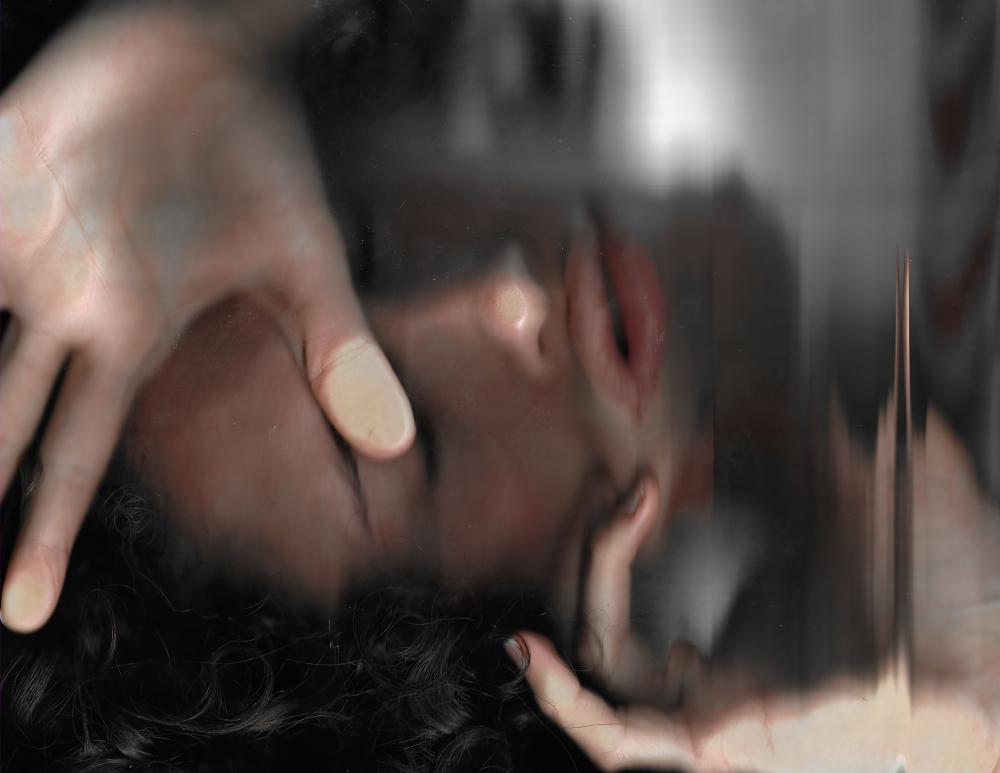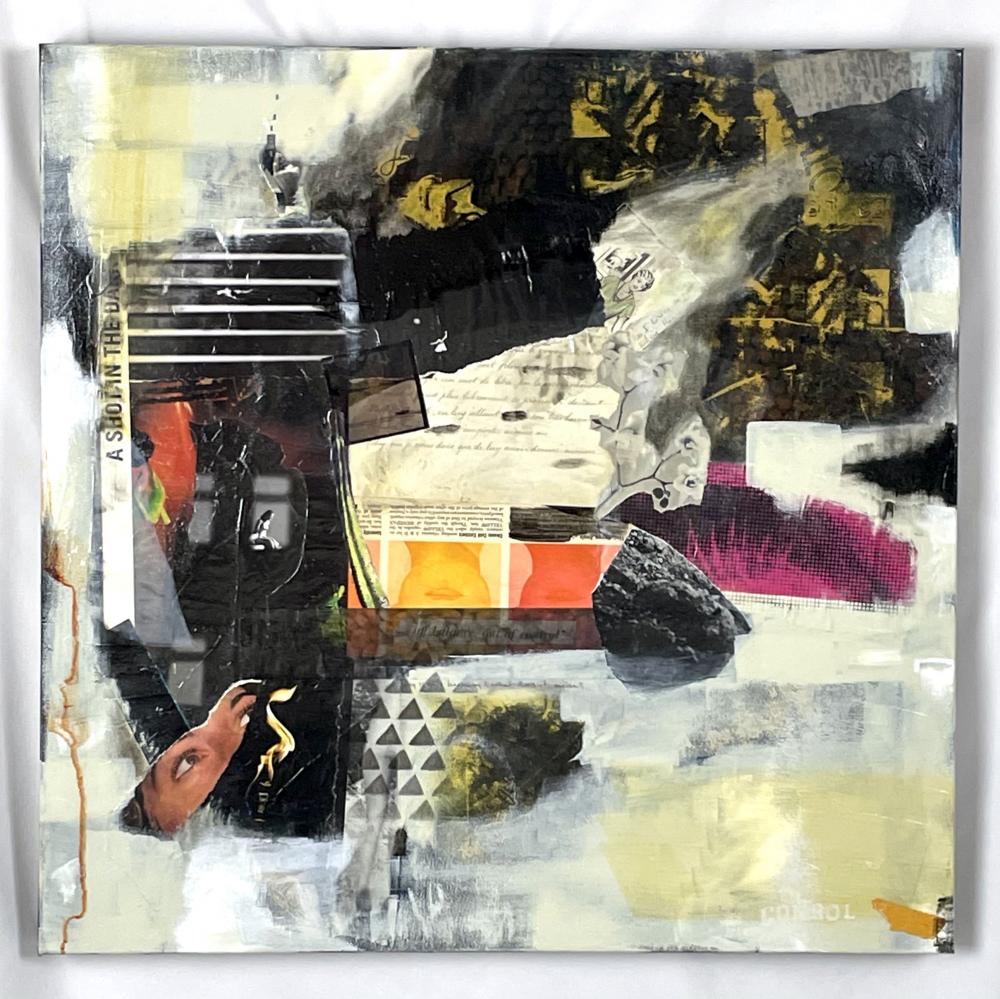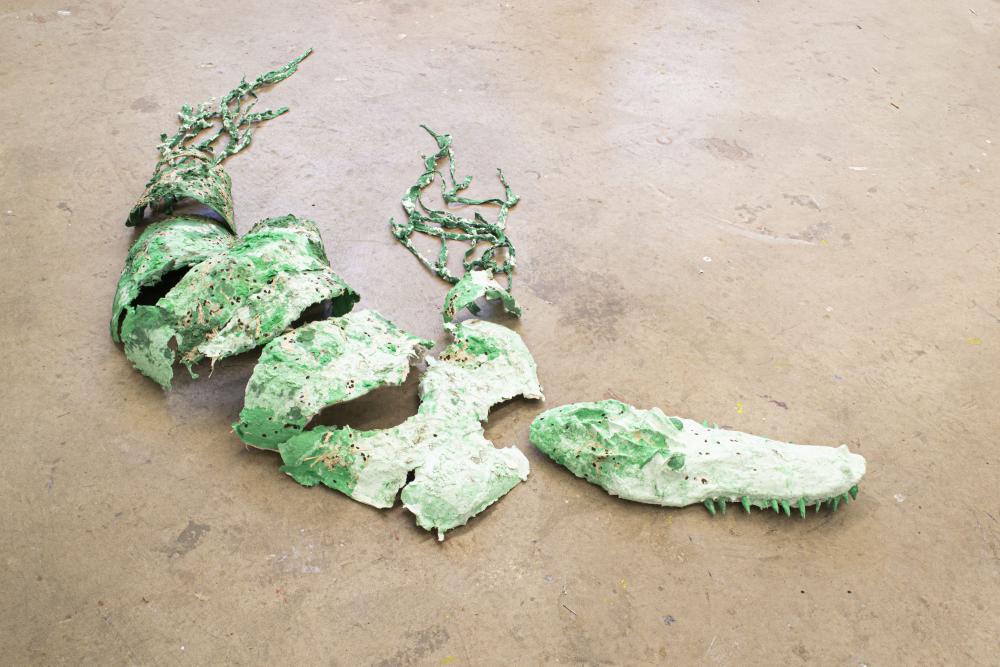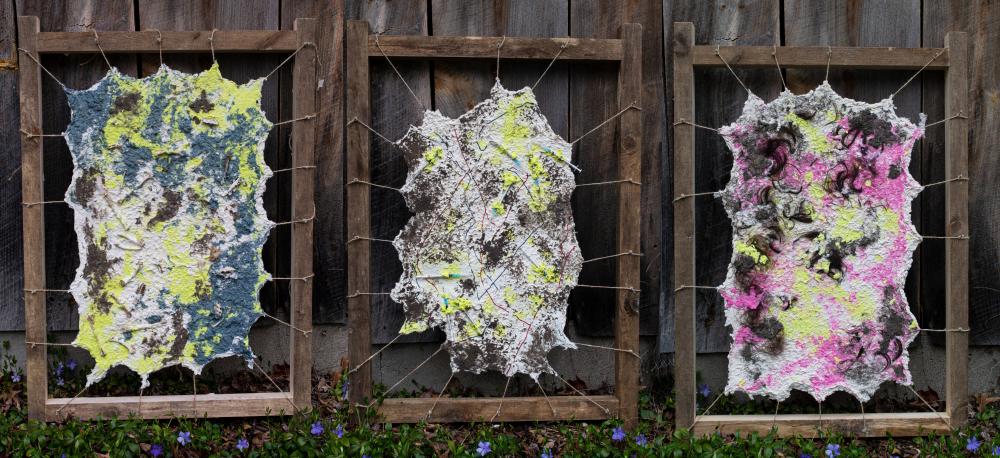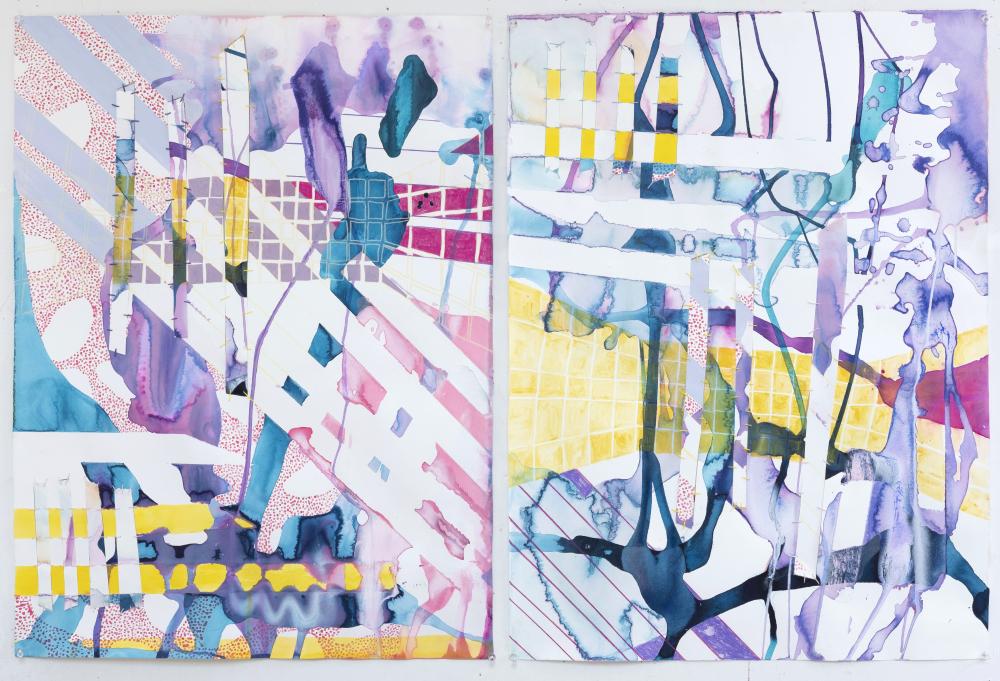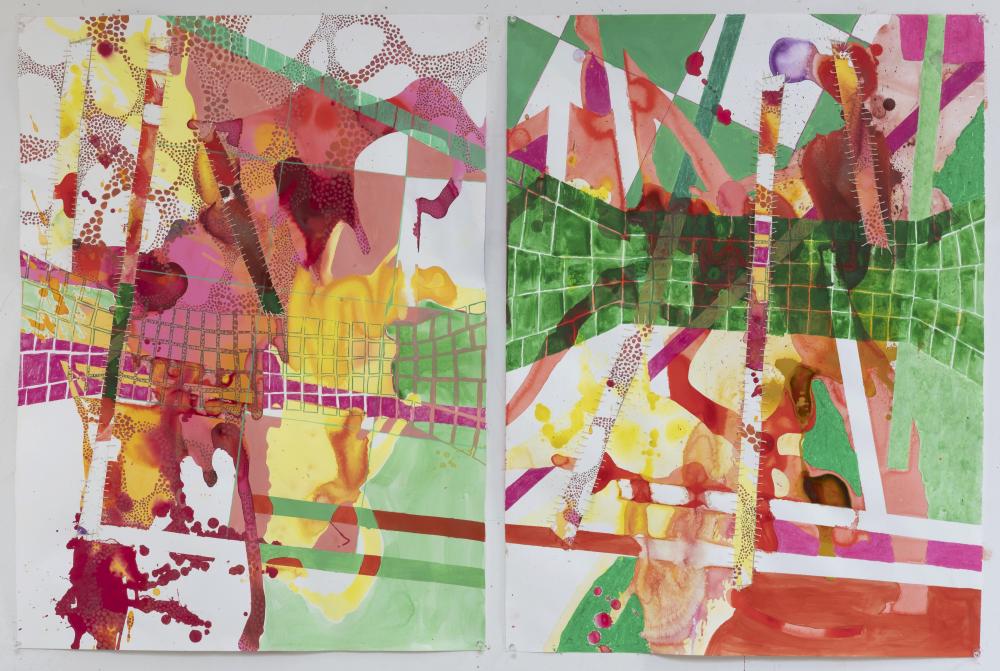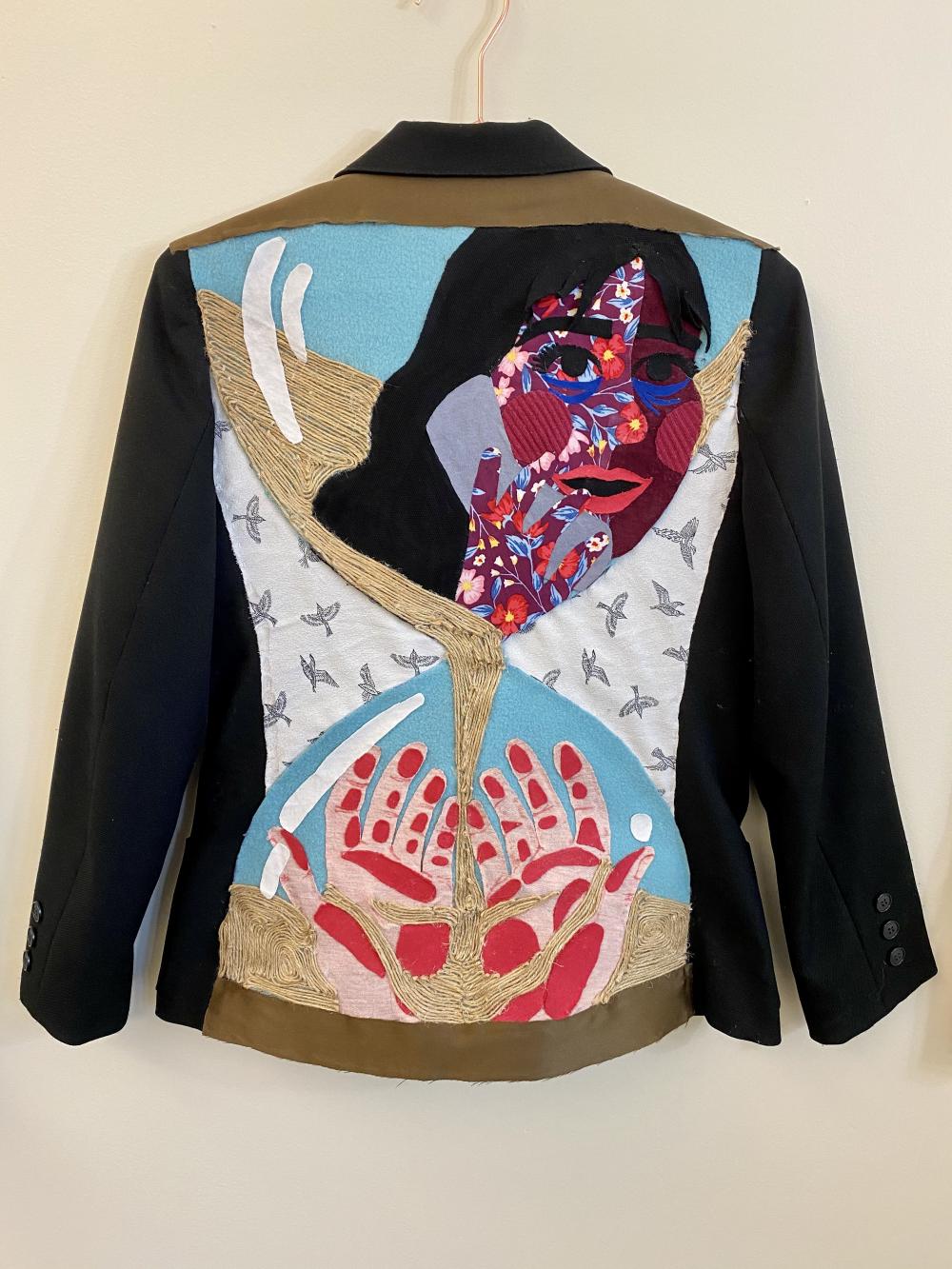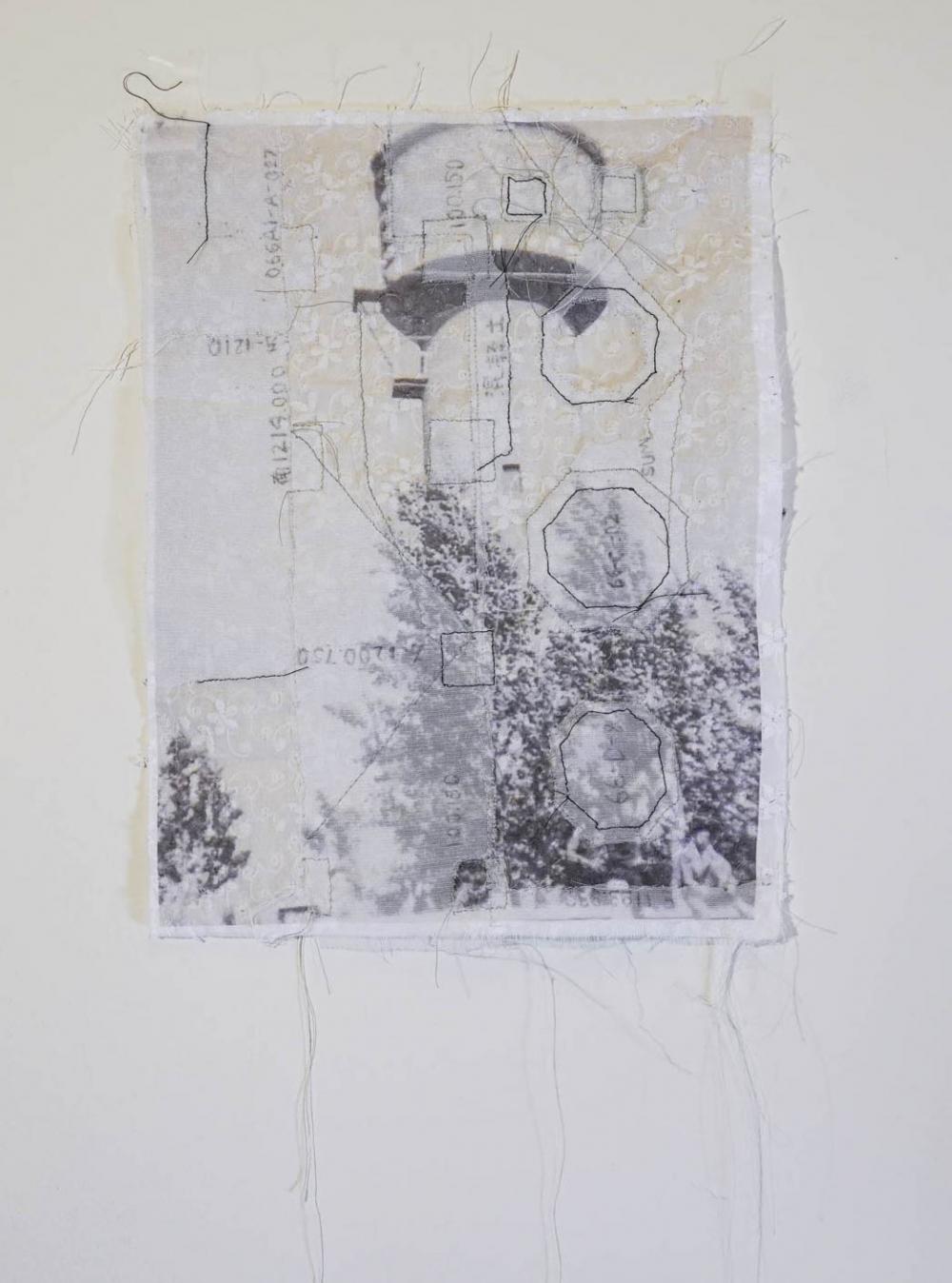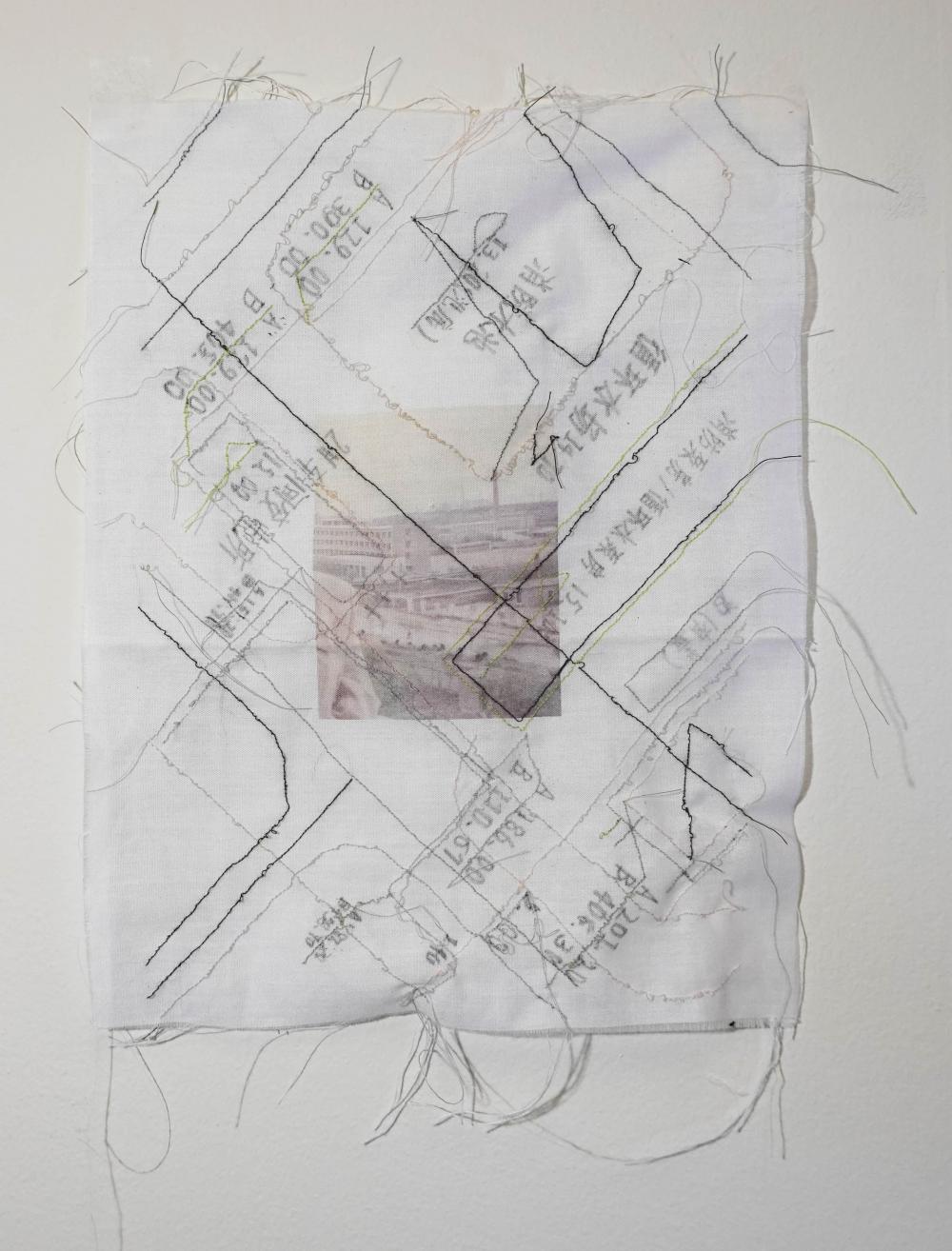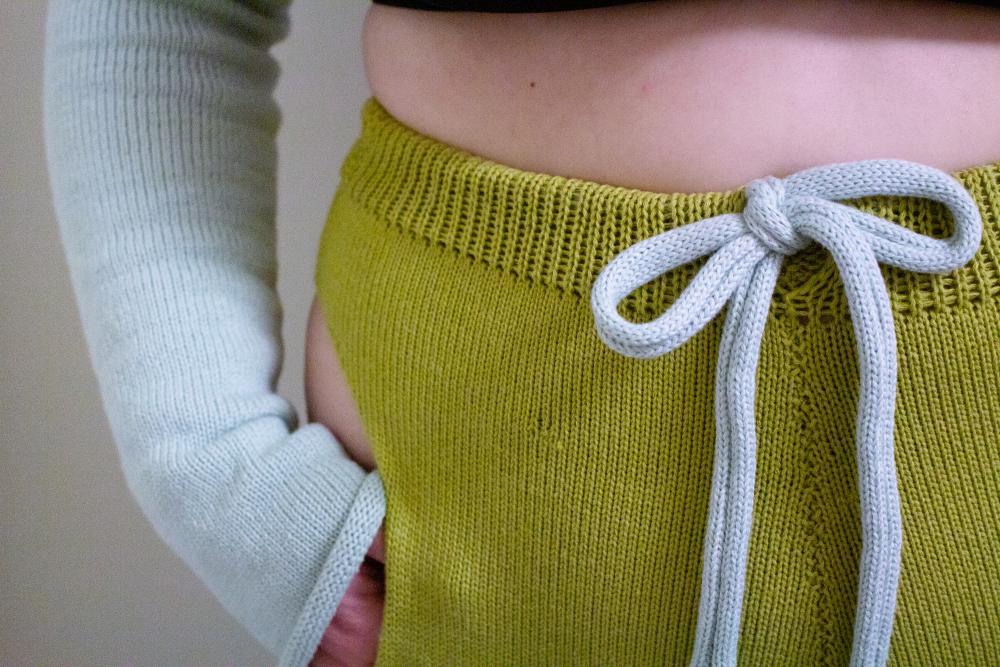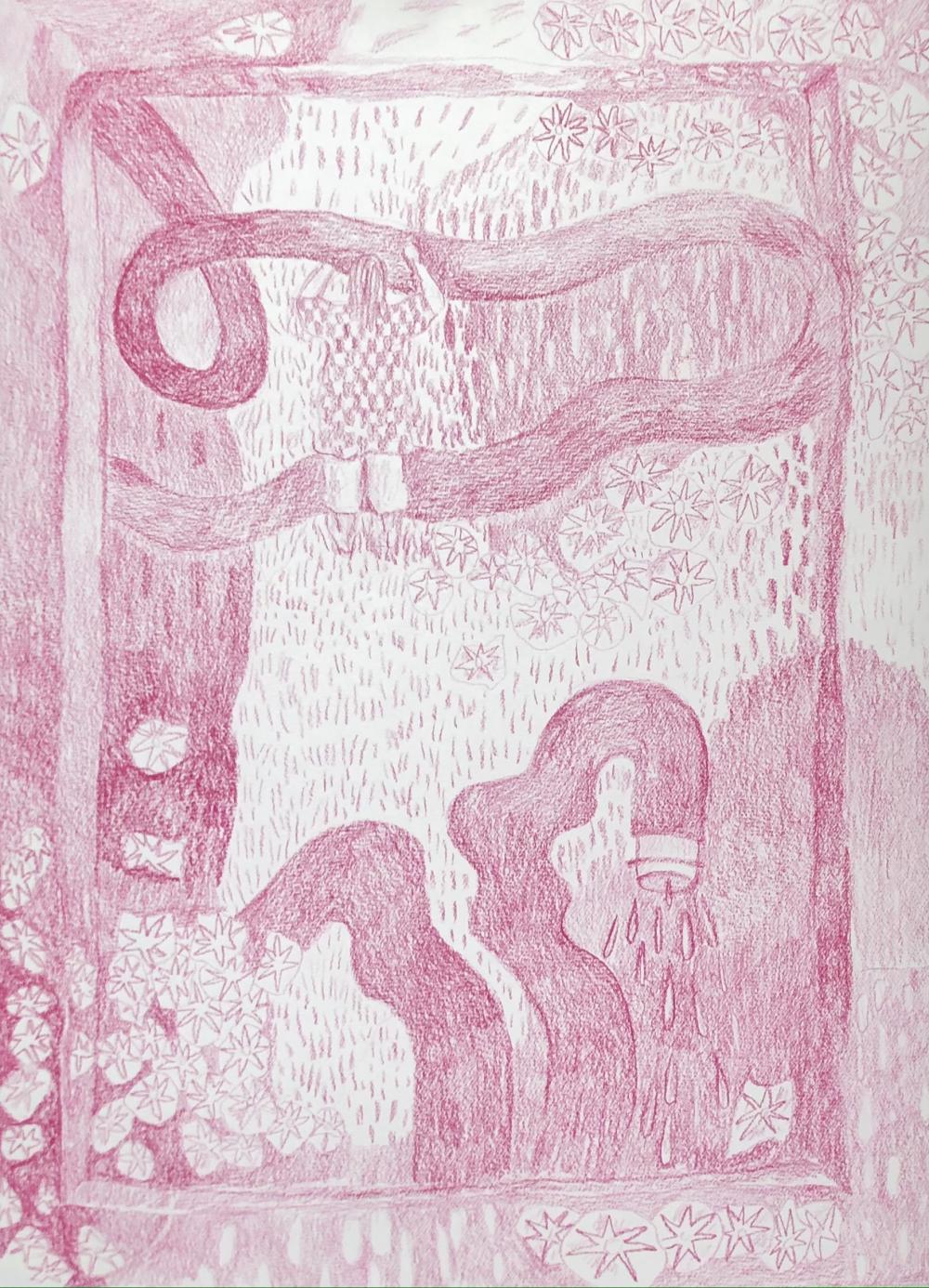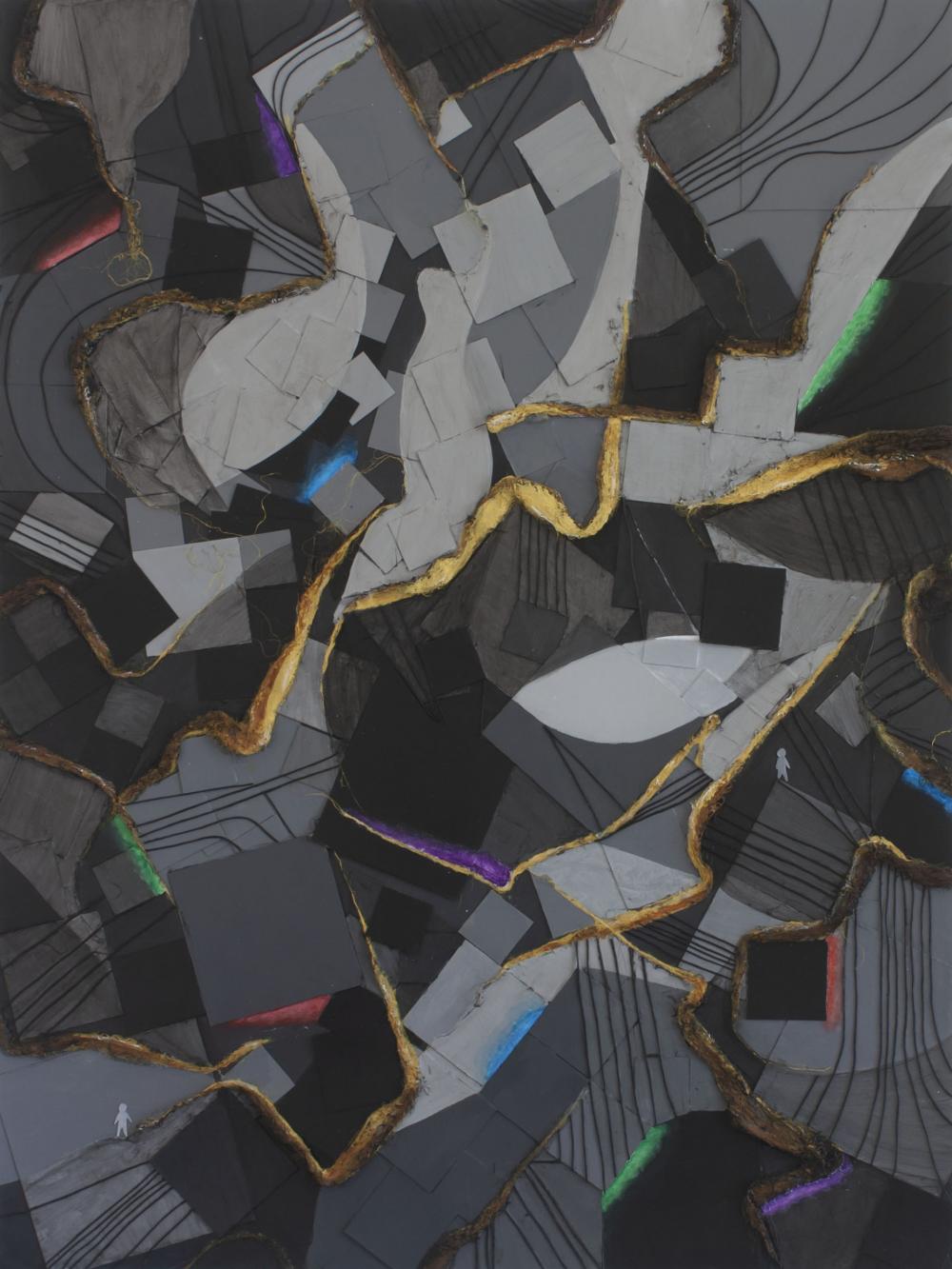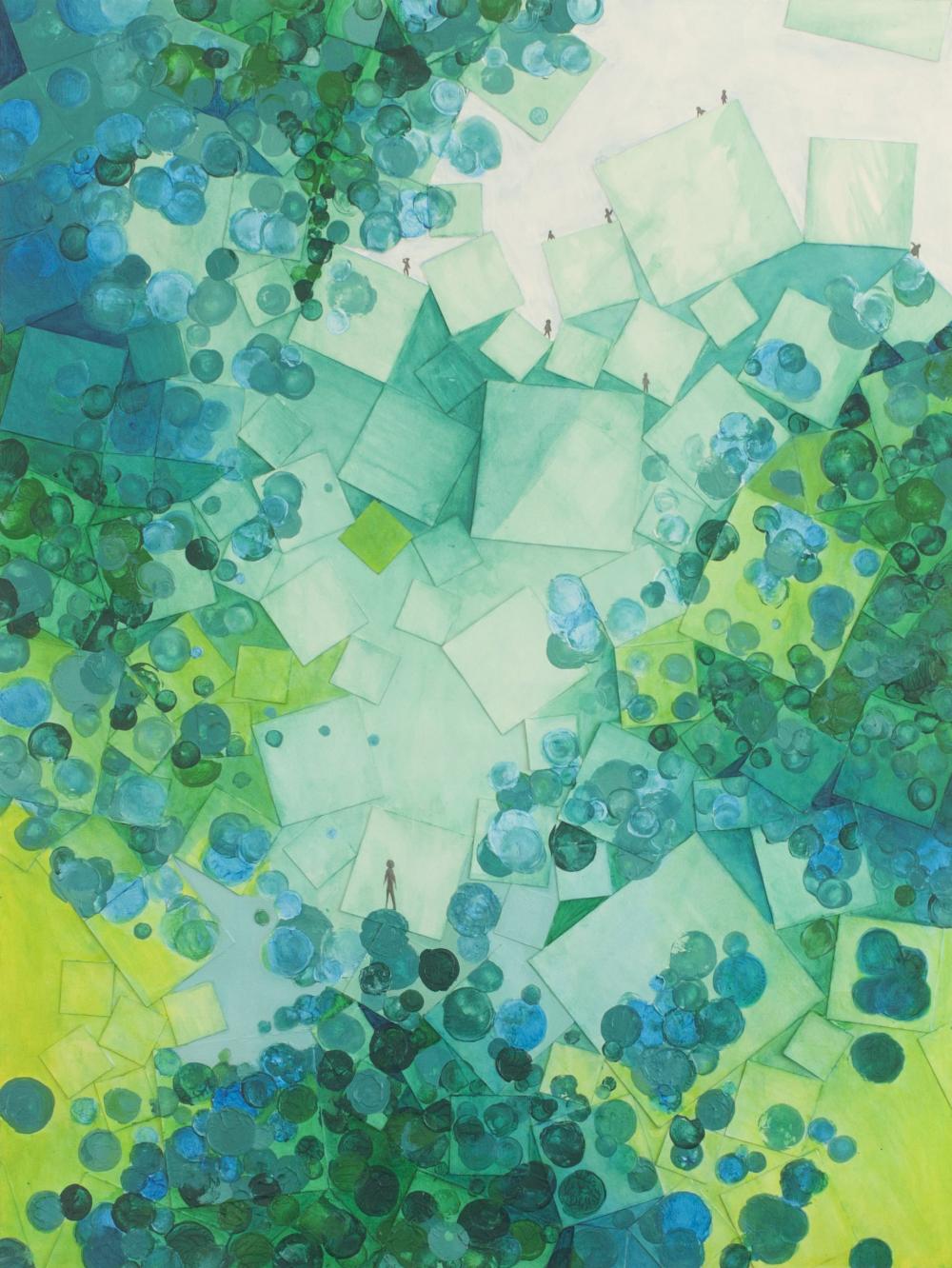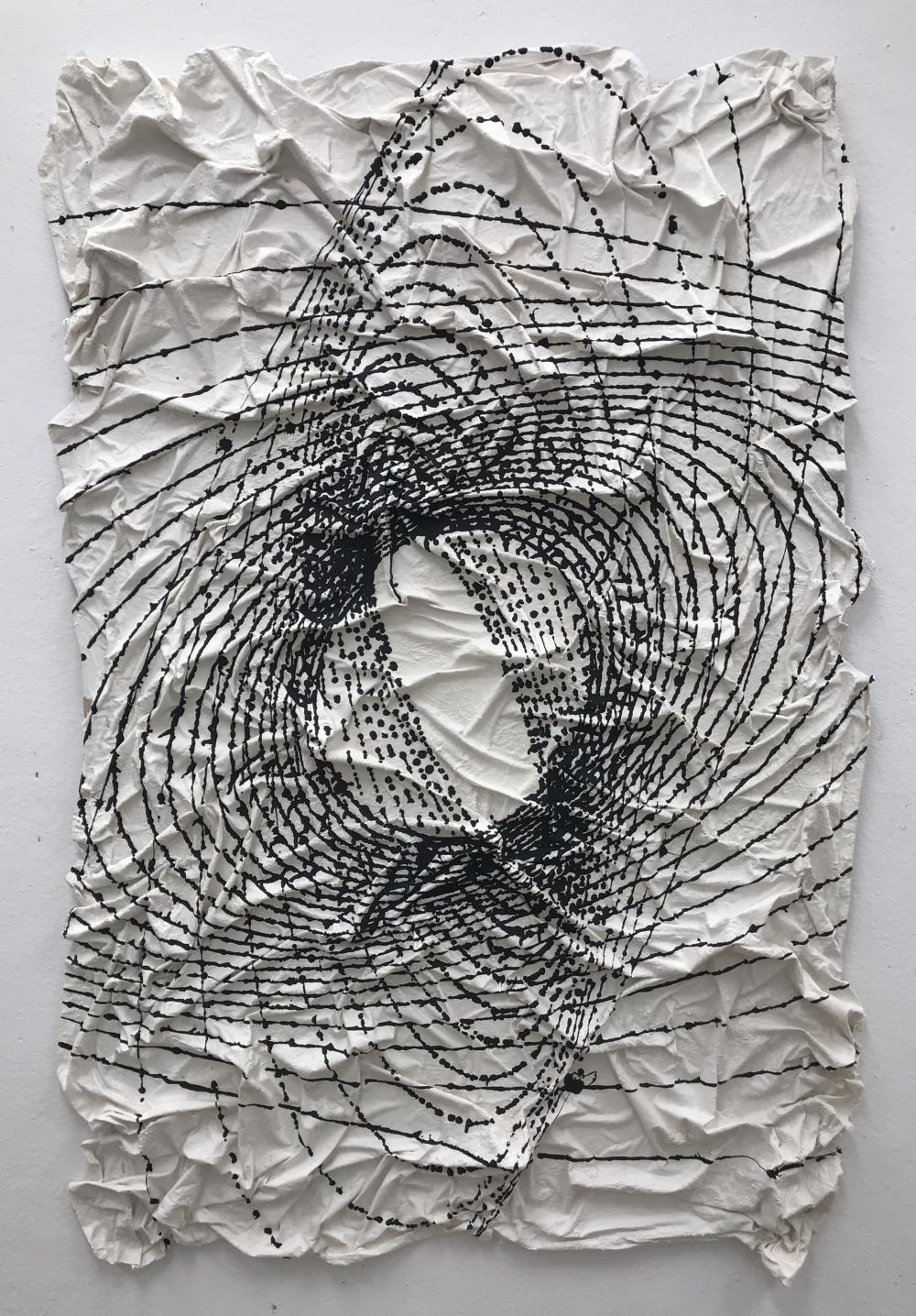Long Distance Relationship
Virtual exhibition created by Class of 2020 and 2021 students in "Senior Studio” capstone course.
In collaboration with art faculty Lisa Iglesias and Ligia Bouton
Designed by Nina Frank
715x975_Banner_LDR_virtual_exhibition_2.1.png

Nina Frank
Introduction
stitch a new garment. One that fits all of humanity and nature.” - Sonya Renee Taylor
In Long Distance Relationship, 15 artists navigate new territories sprung from the global pandemic and associated landscapes of stress, disconnection, and trauma. While much creative research thrives in independent, focused studio time, cultural producers throughout history have turned to their artistic networks for inspiration and connection, by gathering together in salons, critiques, studio visits, receptions, lectures, and hang-outs. Throughout the projects presented in Long Distance Relationship, ranging from textile creations and paintings on paper, to video, performance and site specific sculpture, the artists contend with our reality of social distancing and shifts in time zones. Using Zoom, Google, Discord, Instagram, Facetime, Moodle, Spotify, and other virtual structures in order to nurture and exhibit our creative connections, Long Distance Relationship participants ask what it means to relate to each other through this scope of mediating platforms while offering unique lenses into our contemporary moment.
Here we see artworks that refuse singular definitions, creative practitioners disavowing the limitations of separation, shape shifting forms that beg for second looks, images that connect us with stories across time and space, and conjured intentions that set the stage for new realities. Through an alchemy of determination, vulnerability, tenacity, and a belief in the redemptive and generative power of art, rather than returning to a former version of normalcy, the presenting artists stitch together new visions for our changing world.
Lisa Iglesias
Associate Professor of Art
The exhibition is broken down into four categories:
- Fragmented Bodies
- Stitching Past into Present
- Constructing Memory
- Chromatic Abstraction
Some artists have included their Instagram accounts and personal websites, which can be accessed through links embedded in their names.
To view the artwork information, hover over the image with your cursor.
To view an enlarged version of the artwork, click on image and a pop-up window will appear.
____________________________________________________
Fragmented Bodies
Exploring conceptions of gender, identity, and preconceived boundaries of the anatomical form, the following artworks suggest innovative ways of reconsidering the possibilities of our corporeal selves through fragmentation, collage, and re-contextualizations of the body imaginary.
Anaïs Quiles-Lewis ’21
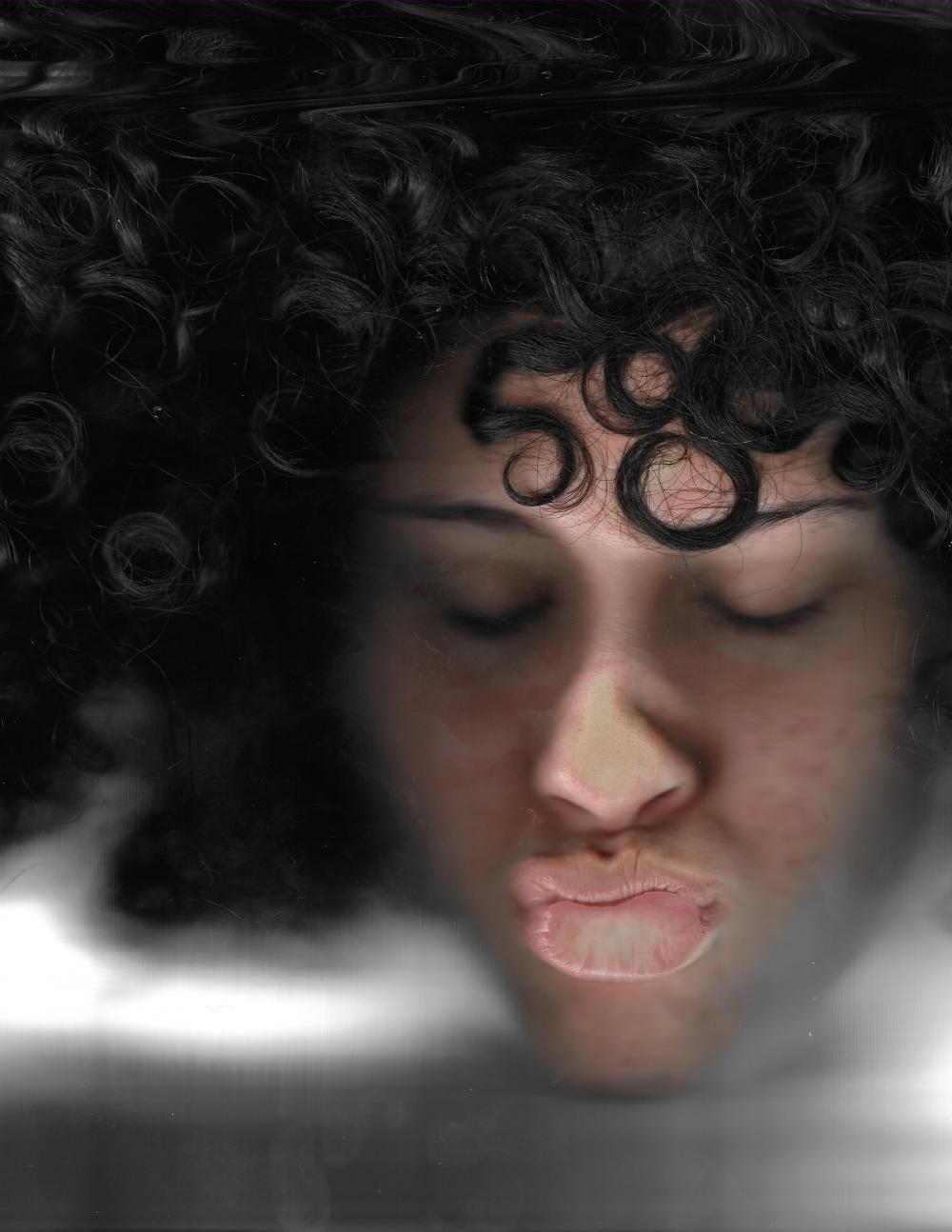 As someone who spent much of their adolescence as a performing artist, as both an actor and singer, I am drawn to action. In my artistic practice, I reclaim my identity, taking control over my mind and my body, and assert myself as both a subject and a creator to the human experience. Why do we act in the ways that we do and to what extent is that in response to the world around us? I am a conceptually driven artist. I work experimentally in a range of mediums including photography, performance, and installation. Much of my work focuses on liminal spaces and hybridity with emotional and physical lived experiences to explore what it means to be human. I intentionally layer resonating complexities drawn from my own memories and impressions of my worldview to help guide viewers through a specific experience. In my series called i finally know, I use my body and a photocopier to produce series self-portraits. As I press my face onto the glass, my form becomes crushed by my physical weight. Each image is an individual outcome to a nonstop process of shifting and pressing. As I move around in an attempt to free myself, I become more distorted and more trapped. The series serves as a metaphor to describe inner conflict and the emotional weight of being trapped within a certain copy of one’s self.
As someone who spent much of their adolescence as a performing artist, as both an actor and singer, I am drawn to action. In my artistic practice, I reclaim my identity, taking control over my mind and my body, and assert myself as both a subject and a creator to the human experience. Why do we act in the ways that we do and to what extent is that in response to the world around us? I am a conceptually driven artist. I work experimentally in a range of mediums including photography, performance, and installation. Much of my work focuses on liminal spaces and hybridity with emotional and physical lived experiences to explore what it means to be human. I intentionally layer resonating complexities drawn from my own memories and impressions of my worldview to help guide viewers through a specific experience. In my series called i finally know, I use my body and a photocopier to produce series self-portraits. As I press my face onto the glass, my form becomes crushed by my physical weight. Each image is an individual outcome to a nonstop process of shifting and pressing. As I move around in an attempt to free myself, I become more distorted and more trapped. The series serves as a metaphor to describe inner conflict and the emotional weight of being trapped within a certain copy of one’s self.
Jamie Capps ’21
@jamie_california
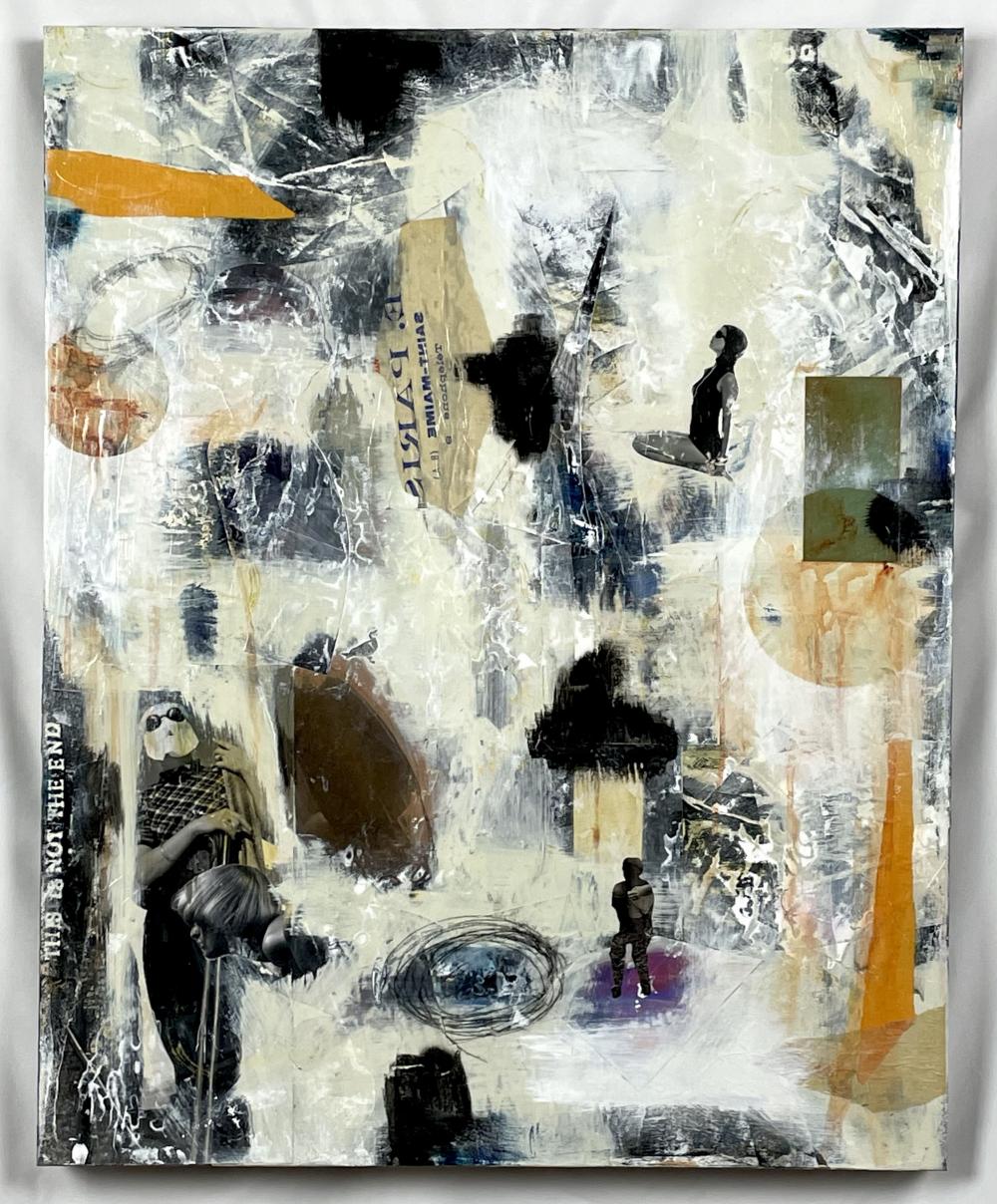 I use nontraditional printmaking techniques and mixed media on substrates ranging from canvas to hardboard and prefer repurposing existing materials like found cardboard. Printmaking techniques are the way I plan my matrix, from which beautiful abstractions come to life. This creates a visual narrative which evokes feeling and connectivity. I have a deep love of vintage photos, magazines, ephemera and found objects. Working with these materials in creating collage is one of the ways I practice sustainability within my work. The work tends to take on a life of its own and might begin as paintings or drawings, only to evolve into entirely different beings, revealing only slight hints to their previous lives. These layers are secrets kept between myself and the object, much like the human experiences the work communicates. This series of abstract and mixed media works reflect on and embody the feelings of isolation, depression and anxiety that have manifested and been magnified over the past year due to the global pandemic and political and social issues arising in the United States. I explored my own issues with anxiety and fear as well as those that manifested in friends and relatives. Creating this work was cathartic and empowering and my hope is that you, the viewer, can also find comfort here.
I use nontraditional printmaking techniques and mixed media on substrates ranging from canvas to hardboard and prefer repurposing existing materials like found cardboard. Printmaking techniques are the way I plan my matrix, from which beautiful abstractions come to life. This creates a visual narrative which evokes feeling and connectivity. I have a deep love of vintage photos, magazines, ephemera and found objects. Working with these materials in creating collage is one of the ways I practice sustainability within my work. The work tends to take on a life of its own and might begin as paintings or drawings, only to evolve into entirely different beings, revealing only slight hints to their previous lives. These layers are secrets kept between myself and the object, much like the human experiences the work communicates. This series of abstract and mixed media works reflect on and embody the feelings of isolation, depression and anxiety that have manifested and been magnified over the past year due to the global pandemic and political and social issues arising in the United States. I explored my own issues with anxiety and fear as well as those that manifested in friends and relatives. Creating this work was cathartic and empowering and my hope is that you, the viewer, can also find comfort here.
 In my thesis project, Flesh and Mud: Bodily Construction Through Handmade Paper, I am challenging representation that can make people uncomfortable by being vulnerable with my body. Through video, handmade paper, and the process of making body casts, I embrace manipulating the image of my body to create monstrous or mythical hybrids to reflect the experience of being “othered” and living in a state of hyper awareness around gendered visibility. The full bodily engagement, use of natural plant fibers, and meditative process inherent to hand papermaking becomes a means of surrendering to the natural environment and functions as a self-healing and liberating process to mediate the frustration and rage of being “unseen” in everyday life. My work acknowledges the internal effort put into that experience to find peace and comfort within the self through the process of making paper. At the same time, I categorize my usage of hybridity and unsettling bodily forms as an external, public method of processing negative experience. Therefore, this body of work blends the external and internal response to defying gender conformity: calling attention to the arbitrary yet confining structures around bodily normativity while simultaneously working in a process that functions as a ritualized act of healing and ownership of the body in communion with nature.
In my thesis project, Flesh and Mud: Bodily Construction Through Handmade Paper, I am challenging representation that can make people uncomfortable by being vulnerable with my body. Through video, handmade paper, and the process of making body casts, I embrace manipulating the image of my body to create monstrous or mythical hybrids to reflect the experience of being “othered” and living in a state of hyper awareness around gendered visibility. The full bodily engagement, use of natural plant fibers, and meditative process inherent to hand papermaking becomes a means of surrendering to the natural environment and functions as a self-healing and liberating process to mediate the frustration and rage of being “unseen” in everyday life. My work acknowledges the internal effort put into that experience to find peace and comfort within the self through the process of making paper. At the same time, I categorize my usage of hybridity and unsettling bodily forms as an external, public method of processing negative experience. Therefore, this body of work blends the external and internal response to defying gender conformity: calling attention to the arbitrary yet confining structures around bodily normativity while simultaneously working in a process that functions as a ritualized act of healing and ownership of the body in communion with nature.
 I am a queer, interdisciplinary artist with a focus in papermaking, born and raised in Pennsylvania. I use handmade paper as a medium for sculpture and installation, but I also consider myself to be a storyteller and my work a medium for stories. I work with handmade paper, from Western and Eastern traditions, steel and other metals for sculptures, and keep several journals for sketches, thoughts and concepts. With these new 2D works on paper, I hope to show how paper can act as a medium in itself for simple images, and help draw attention to the mundane. Kids all draw trees the same way—tall, skinny trunks and winding branches, much like how they draw people similarly with a head and arms and legs. Now, looking up close, there are noticeable differences in the types of bark, branching patterns, types of lichen on any cluster of trees. I hope to mimic feelings that come from watching the sun peek through stripes of trees or the laugh of two trees rubbing against each other. By highlighting these brief moments, the line between human form and organic, earth derived form becomes unclear and blurry. The work that follows is abstract and anthropomorphic. Because I never intentionally bring the human body and its recognizable features into my work, it pushes the boundaries of what the brain recognizes as familiar versus a new, unknown.
I am a queer, interdisciplinary artist with a focus in papermaking, born and raised in Pennsylvania. I use handmade paper as a medium for sculpture and installation, but I also consider myself to be a storyteller and my work a medium for stories. I work with handmade paper, from Western and Eastern traditions, steel and other metals for sculptures, and keep several journals for sketches, thoughts and concepts. With these new 2D works on paper, I hope to show how paper can act as a medium in itself for simple images, and help draw attention to the mundane. Kids all draw trees the same way—tall, skinny trunks and winding branches, much like how they draw people similarly with a head and arms and legs. Now, looking up close, there are noticeable differences in the types of bark, branching patterns, types of lichen on any cluster of trees. I hope to mimic feelings that come from watching the sun peek through stripes of trees or the laugh of two trees rubbing against each other. By highlighting these brief moments, the line between human form and organic, earth derived form becomes unclear and blurry. The work that follows is abstract and anthropomorphic. Because I never intentionally bring the human body and its recognizable features into my work, it pushes the boundaries of what the brain recognizes as familiar versus a new, unknown.
____________________________________________________
Stitching Past into Present
Collapsing divisions and assumptions of time and material, artists layer traces of textile gestures and weave together origin stories and contemporary perspectives in order to reveal present-day, crafted palimpsests.
Cora Melcher ’20
@coramelcherart
I am a Portland (Maine) based artist working primarily in paint, print and film. I graduated from Mount Holyoke College in 2020 with a BA in both Studio Art and Psychology. Much of my work urges viewers to confront the interconnectedness of emotional, energetic and physical experience. The works on display are from my 2020 thesis series titled Painting Transplants: Processes in Healing, consisting of seven diptych paintings on paper. Each piece was created through a procedural framework with three predetermined steps. A brief description of the three steps: The first is made up of the action of pouring acrylic ink or paint onto paper. The second step in the process is largely a reaction to the initial spill. The job of this second step is to create layers of abstract gestural imagery and contradictory textures to generate a vocabulary of patterns. The third step, called the ‘transplant’ step, consists of cutting shapes out of the paper, swapping them with the corresponding piece in the diptych and suturing them in place with embroidery thread. Conceptually, these pieces investigate the idea of shared energy across physical boundaries; how energy can be created through reacting to an event (initial spill) and how those reactions affect others around us. This work emerged out of abstract expressionism and was influenced specifically by the work of artists Helen Frankenthaller, Alexandra Grant and Carrie Moyer.
Jennifer Villa ’21
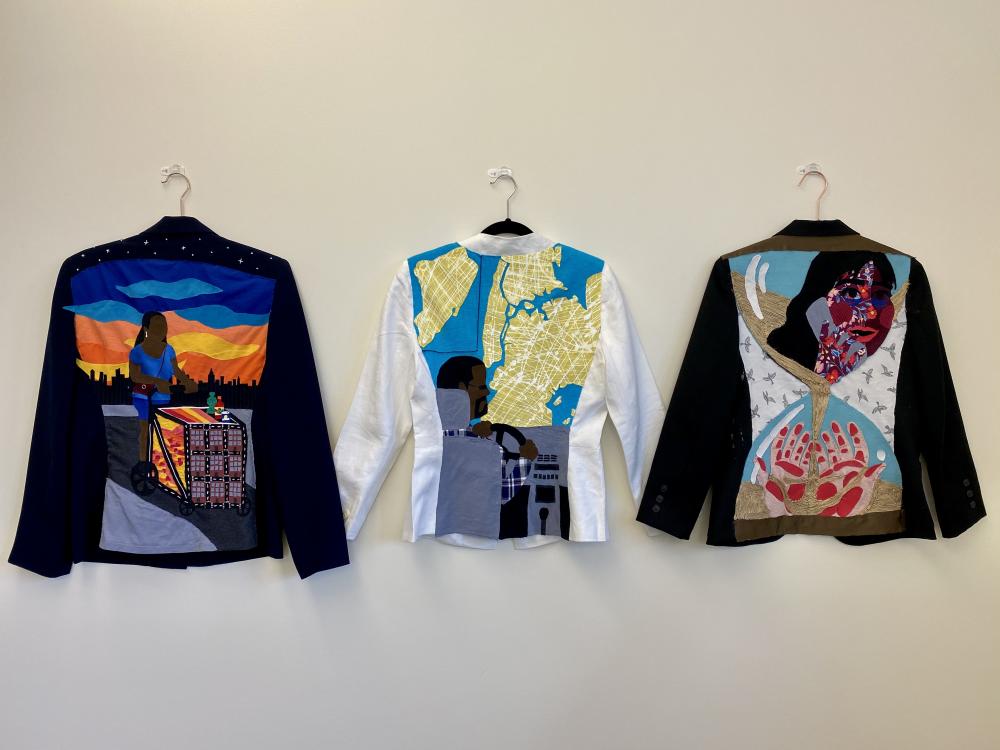 Upon my back is a series of fabric portraits sewn onto blazers. The fabric portraits depict imagery of the labor of immigrant parents from the eyes of their children. As a multimedia sculptor who carries out projects through an anthropological lens, I conducted a sequence of interviews with three college students. The participants had parent(s) that had immigrated to the United States from different Latinx countries. Coming from a similar background, I knew there was often a shared sentiment of pride, adversity, and longing, in other words, “the American dream.” During the interview process I listened and connected with students about their experiences and memories of their parents labor and how it affected their upbringing. The intimate stories they shared with me made me laugh, tear up and learn more about what it means to grow up in a world where you feel a split between two cultures. I sketched an homage to their parents and decided to bring these depictions to life by sewing them onto something that could be worn. A blazer, symbolic of class, is an acknowledgement of the students’ achievement of the American Dream by going to college. This history is a part of them that they can literally wear, with pride, into elite places. The core of these stories are on the backs of the blazers because it can also be a heavy burden to carry.
Upon my back is a series of fabric portraits sewn onto blazers. The fabric portraits depict imagery of the labor of immigrant parents from the eyes of their children. As a multimedia sculptor who carries out projects through an anthropological lens, I conducted a sequence of interviews with three college students. The participants had parent(s) that had immigrated to the United States from different Latinx countries. Coming from a similar background, I knew there was often a shared sentiment of pride, adversity, and longing, in other words, “the American dream.” During the interview process I listened and connected with students about their experiences and memories of their parents labor and how it affected their upbringing. The intimate stories they shared with me made me laugh, tear up and learn more about what it means to grow up in a world where you feel a split between two cultures. I sketched an homage to their parents and decided to bring these depictions to life by sewing them onto something that could be worn. A blazer, symbolic of class, is an acknowledgement of the students’ achievement of the American Dream by going to college. This history is a part of them that they can literally wear, with pride, into elite places. The core of these stories are on the backs of the blazers because it can also be a heavy burden to carry.
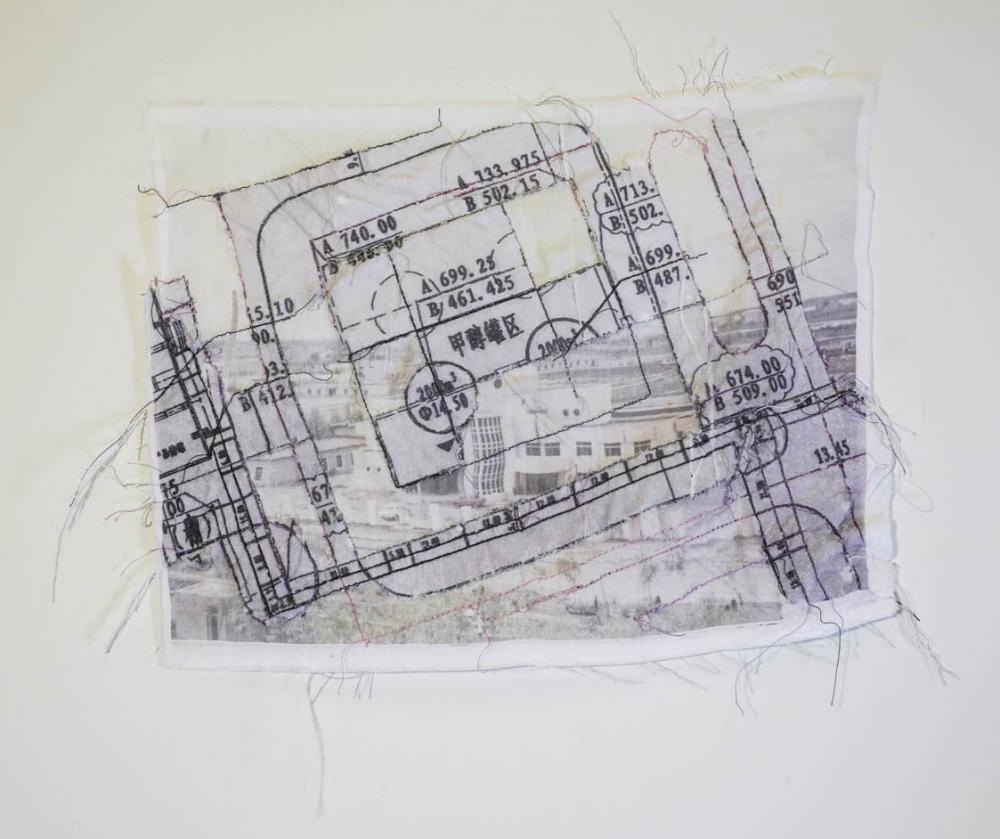 Jianing Li is an Asian Queer artist/ photographer working with subjects including family, hometown, memory and solitude. She works with digital images, printed images, plants, and fabric. She uses photography in order to transform overlooked daily moments into narrative images, while also exploring possibilities of different combinations of forms and the hidden messages behind banal embodiment. Her works are inspired by Alfred Steiglits, Sherron Rupp, and Feng Li. Whenever I think of my hometown, one thing that always comes to my mind is the oil rigs. You can see them at every corner of the city. It's repetitive movement and how that resembles a working sewing machine inspired me to work on this project. I print a cropped old photo on fabric including half of my mother's shoulder with factories in the background. Then I sew part of the factory layout map that was designed by her over this image. Through Old City, I hope to reconnect to my hometown and reevaluate the relationship of place and people that live in that place.
Jianing Li is an Asian Queer artist/ photographer working with subjects including family, hometown, memory and solitude. She works with digital images, printed images, plants, and fabric. She uses photography in order to transform overlooked daily moments into narrative images, while also exploring possibilities of different combinations of forms and the hidden messages behind banal embodiment. Her works are inspired by Alfred Steiglits, Sherron Rupp, and Feng Li. Whenever I think of my hometown, one thing that always comes to my mind is the oil rigs. You can see them at every corner of the city. It's repetitive movement and how that resembles a working sewing machine inspired me to work on this project. I print a cropped old photo on fabric including half of my mother's shoulder with factories in the background. Then I sew part of the factory layout map that was designed by her over this image. Through Old City, I hope to reconnect to my hometown and reevaluate the relationship of place and people that live in that place.
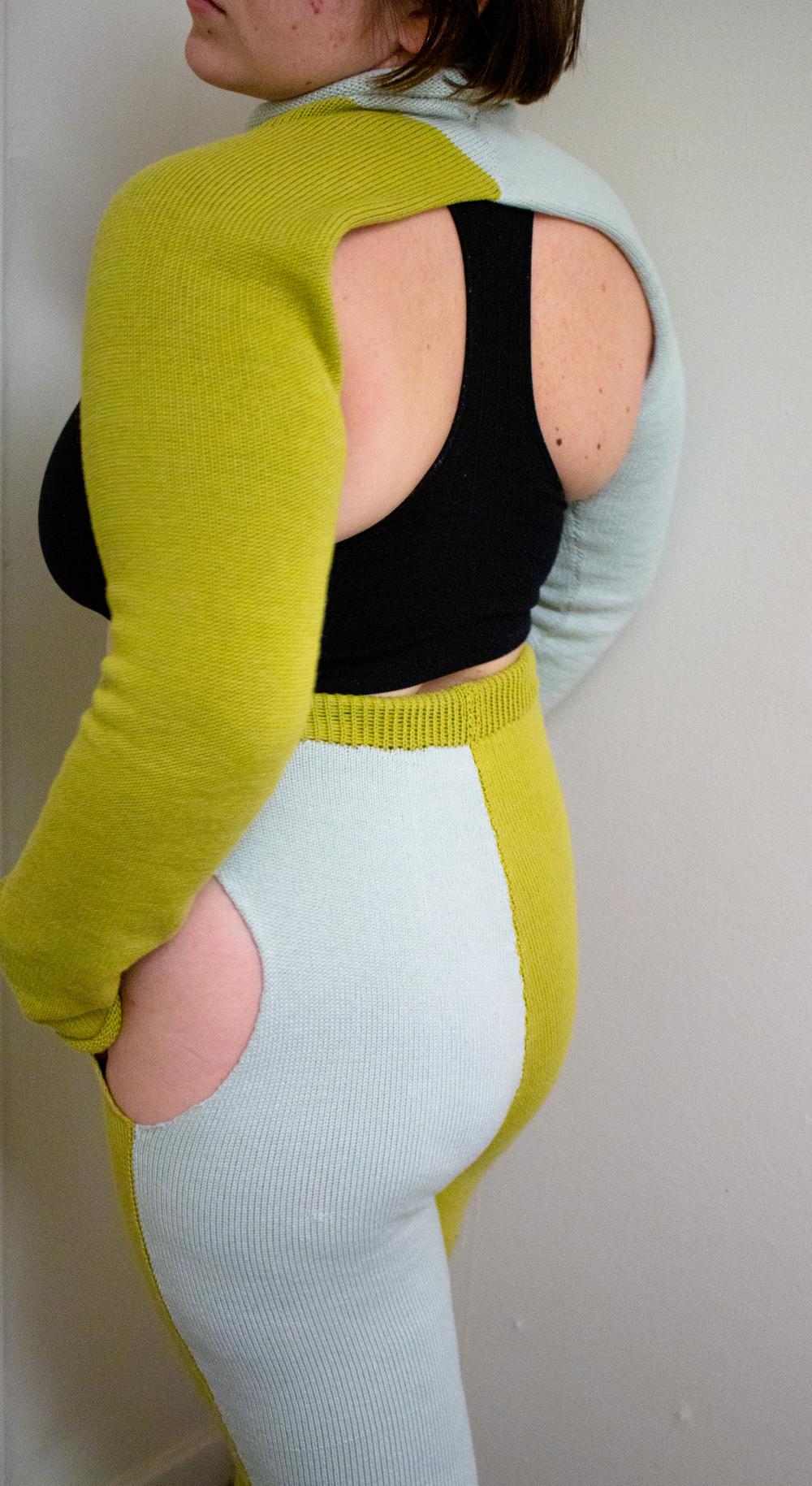 I am a sculptor, designer, and installation artist. At Mount Holyoke College I studied welding and papermaking, while integrating the craft and textile traditions I inherited from my mother and grandmother into my studio practice. My passion for creating garments has shaped my approach to sculpture, space, and texture. Through the process of unravelling discarded, factory made sweaters, and re-knitting them into handmade garments of a new, original design, I stretch the boundaries of knitting. While the styles of fast-fashion garments are not made to last, the materials that compose them remain. Because of this, I am able to create something new: a piece not designed for a mass audience, but for an individual. Through this process of unravelling and re-knitting, I envision a much slower and more cyclical approach to creating and wearing clothing. Repurposing is a central component of my artistic practice, as well as learning, experimentation, and process. Through tactile and varying texture, I convey complex emotions and feelings in my work. By incorporating evidence of my hand and process into the finished piece, I attract the viewer’s attention and invite them to think more about how the piece was created. Through this pulling back of the curtain, I am able to highlight the importance of craft in my work and ask viewers to question the processes required to create the goods they use in their daily lives.
I am a sculptor, designer, and installation artist. At Mount Holyoke College I studied welding and papermaking, while integrating the craft and textile traditions I inherited from my mother and grandmother into my studio practice. My passion for creating garments has shaped my approach to sculpture, space, and texture. Through the process of unravelling discarded, factory made sweaters, and re-knitting them into handmade garments of a new, original design, I stretch the boundaries of knitting. While the styles of fast-fashion garments are not made to last, the materials that compose them remain. Because of this, I am able to create something new: a piece not designed for a mass audience, but for an individual. Through this process of unravelling and re-knitting, I envision a much slower and more cyclical approach to creating and wearing clothing. Repurposing is a central component of my artistic practice, as well as learning, experimentation, and process. Through tactile and varying texture, I convey complex emotions and feelings in my work. By incorporating evidence of my hand and process into the finished piece, I attract the viewer’s attention and invite them to think more about how the piece was created. Through this pulling back of the curtain, I am able to highlight the importance of craft in my work and ask viewers to question the processes required to create the goods they use in their daily lives.Constructing Memory
Mining themes of the familial, inherited stories, and the ever-shifting modes of memory and history, the following artists navigate strata of recollection, the legacies of their forebears, and current relationships.
 In my work I focus on challenging the limits of paper. Using only a single sheet of paper, I work with a blade to cut out intricate designs. Attention to detail and extensive planning are very important to my work, as my process is often very introspective. In most of my pieces I enjoy working with silhouettes and cut-outs, playing with what the viewer perceives. By limiting my materials, I not only want to challenge myself as an artist, but also challenge the viewer to look closer and spend more time with the details. I am influenced by artists such as Cristian Marianciuc, Anila Quayyam Agha, and the tradition of kirie. Both of these pieces were made during the pandemic. I, like many others, have struggled with finding inspiration and motivation to create art. Instead of focusing on the ‘outside’ world, I began to focus on what I was feeling and experiencing everyday. Lazzar Family Portrait was an attempt to create work for my now limited audience and elevate my family to the level of nobles. My family home became my whole world, and it felt fitting to follow in the tradition of royal family portraiture and emphasize their importance in my life. I made Roots after returning to campus in the winter and struggling with wanting to create anything. The repetitive nature of drawing and cutting out the patterns gave me time to take a pause to process and reflect on my emotions.
In my work I focus on challenging the limits of paper. Using only a single sheet of paper, I work with a blade to cut out intricate designs. Attention to detail and extensive planning are very important to my work, as my process is often very introspective. In most of my pieces I enjoy working with silhouettes and cut-outs, playing with what the viewer perceives. By limiting my materials, I not only want to challenge myself as an artist, but also challenge the viewer to look closer and spend more time with the details. I am influenced by artists such as Cristian Marianciuc, Anila Quayyam Agha, and the tradition of kirie. Both of these pieces were made during the pandemic. I, like many others, have struggled with finding inspiration and motivation to create art. Instead of focusing on the ‘outside’ world, I began to focus on what I was feeling and experiencing everyday. Lazzar Family Portrait was an attempt to create work for my now limited audience and elevate my family to the level of nobles. My family home became my whole world, and it felt fitting to follow in the tradition of royal family portraiture and emphasize their importance in my life. I made Roots after returning to campus in the winter and struggling with wanting to create anything. The repetitive nature of drawing and cutting out the patterns gave me time to take a pause to process and reflect on my emotions.
I am an interdisciplinary artist from Ludlow, Massachusetts working in sculpture, printmaking, installation, and photography. The work I create encompasses themes of fantasy, fairytale, playfulness, and childhood. I utilize natural found objects, bright colors, and both very large and very small scales in my work to create pieces that can be observed with multiple senses. I am inspired by artwork intended for children, including animation and illustration, but my hope is to create artwork that is interesting and accessible to all kinds of viewers. I hope anyone who comes across my work is able to feel the magic and wonder I try to access while creating it. This piece, titled Moments in the Woods has been the culmination of a lot of the work I’ve done in the past few years. I’ve consistently engaged with fairy tales in my work, and have been especially fascinated by the themes and aesthetics in the stories of Rapunzel and Little Red Riding Hood. For this piece, I crafted Rapunzel’s tower and Red Riding Hood’s Grandmother’s house with the intention that the viewer could work out different elements of the stories by coming across these structures. This piece is currently installed around Upper Lake at Mount Holyoke College (located here). If you are nearby, take a walk and see if you can stumble upon it for yourself.
Lauren Ferrara ’21
@laureanferrarastudio
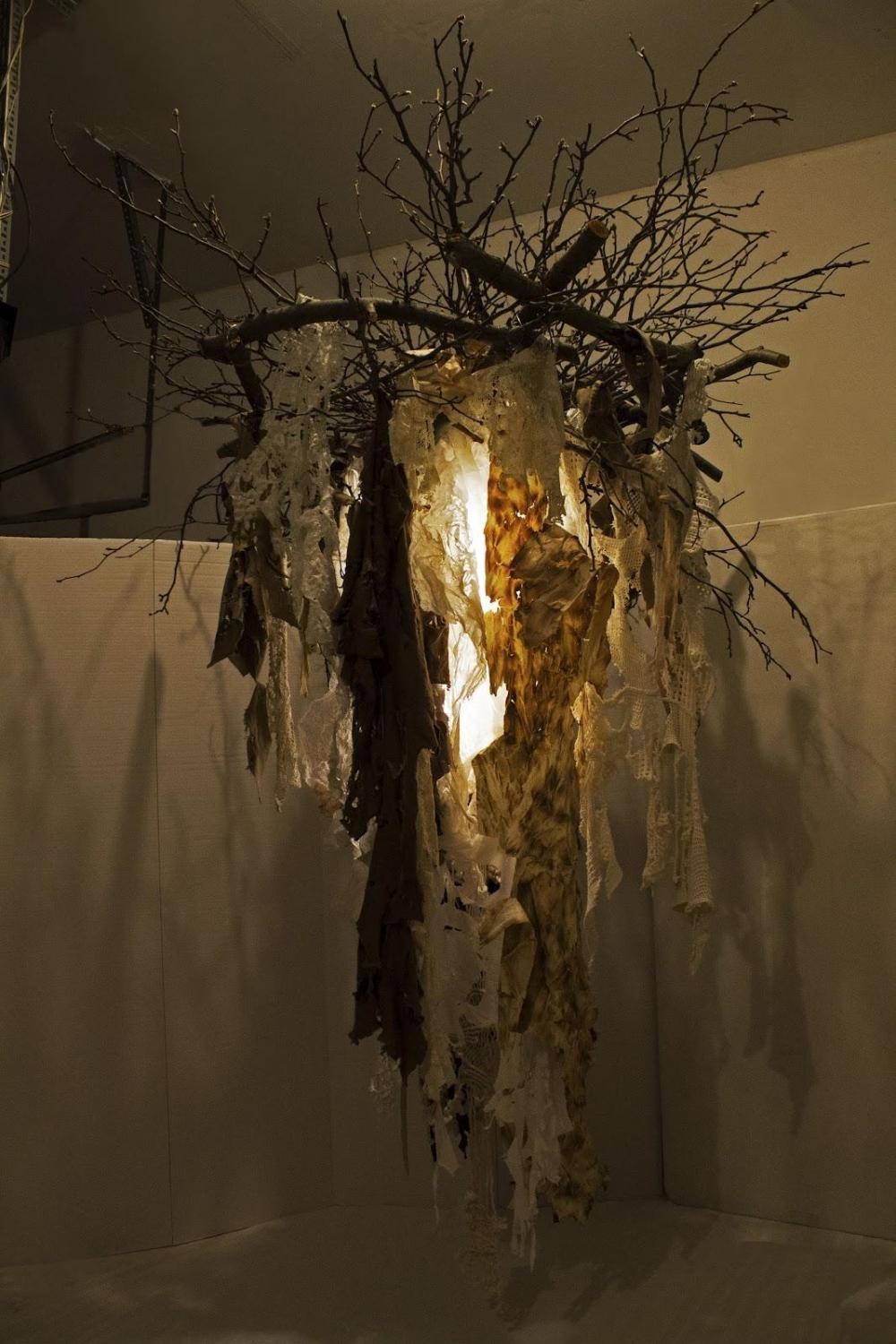 As an artist, I primarily create sculptural works, interactive installations, and performance art. Within my installations and sculptural works, I repurpose common objects and push their properties to a point where the materials reach a new state of being. Throughout my performance art, I explore the relationship between body and space. Additionally, reflection of environment and self is prominent throughout my practice. I began this thesis during the months leading up to the COVID-19 pandemic, and finished it during the peak of outbreaks in the second largest hotspot in the United States. My sculptural piece titled Absence was made on Mount Holyoke College’s campus, while my Isolation installation and 6 Feet Apart performance piece were influenced by the rupture of the global pandemic and created at my home in New Jersey. Within this body of work, all three pieces incorporate the themes of reflection, transformation, and embodiment of space. Absence was a response to my personal experience with PTSD, which resulted in a tangible visualization of the concept through the process of material manipulation. Isolation is a piece that explores the presence and feeling of isolation and confinement during the COVID-19 pandemic. 6 Feet Apart was a performance that lasted for a duration of two hours. Inviting my entire family to perform with me, 6 Feet Apart served as a reflection of the new performance we must take on in our daily lives in quarantine, and brings light to how our movement and existence have been altered throughout this pandemic.
As an artist, I primarily create sculptural works, interactive installations, and performance art. Within my installations and sculptural works, I repurpose common objects and push their properties to a point where the materials reach a new state of being. Throughout my performance art, I explore the relationship between body and space. Additionally, reflection of environment and self is prominent throughout my practice. I began this thesis during the months leading up to the COVID-19 pandemic, and finished it during the peak of outbreaks in the second largest hotspot in the United States. My sculptural piece titled Absence was made on Mount Holyoke College’s campus, while my Isolation installation and 6 Feet Apart performance piece were influenced by the rupture of the global pandemic and created at my home in New Jersey. Within this body of work, all three pieces incorporate the themes of reflection, transformation, and embodiment of space. Absence was a response to my personal experience with PTSD, which resulted in a tangible visualization of the concept through the process of material manipulation. Isolation is a piece that explores the presence and feeling of isolation and confinement during the COVID-19 pandemic. 6 Feet Apart was a performance that lasted for a duration of two hours. Inviting my entire family to perform with me, 6 Feet Apart served as a reflection of the new performance we must take on in our daily lives in quarantine, and brings light to how our movement and existence have been altered throughout this pandemic.
I am an artist creating collages, paintings, and drawings. I produce my work mostly from memory and imagination but I also reference family photos. Making from my imagination allows for warped figures and inaccurate depictions creating a fuzzy and dreamlike quality. I am interested in the effects of having both abstract and representational imagery in one image and depicting different figures in varying styles. In this imaginary memory space that is my drawings and paintings, I explore themes varying from nature, childhood, family, and relationships. A memory is layered and fragmented and there are multiple editions of a single recollection. It shifts and fades over time and the same moment is remembered with slight changes by different people. When I draw upon a moment of the past it is never a single image that comes to mind. It spills into other experiences and gets rearranged, defying the confines of a traditional rectangle and expanding outwards in order to invent new narratives. Memory Garden and Backyard/Recollection were made using a process of repeating similar images with different materials each time. Memory Garden is a combination of painting and collage and is an homage to my grandfather who taught me how to garden. Backyard/Recollection combines dreamscapes with memories and is about nostalgia for ordinary events and summertime.
____________________________________________________
Chromatic Abstraction
Instrumentalizing radical formalism and exploring the aesthetics of form and color, these artists unpack the possibilities of the spectacular and ordinary topographies of chroma and touch.
Cordelia Jones ’21
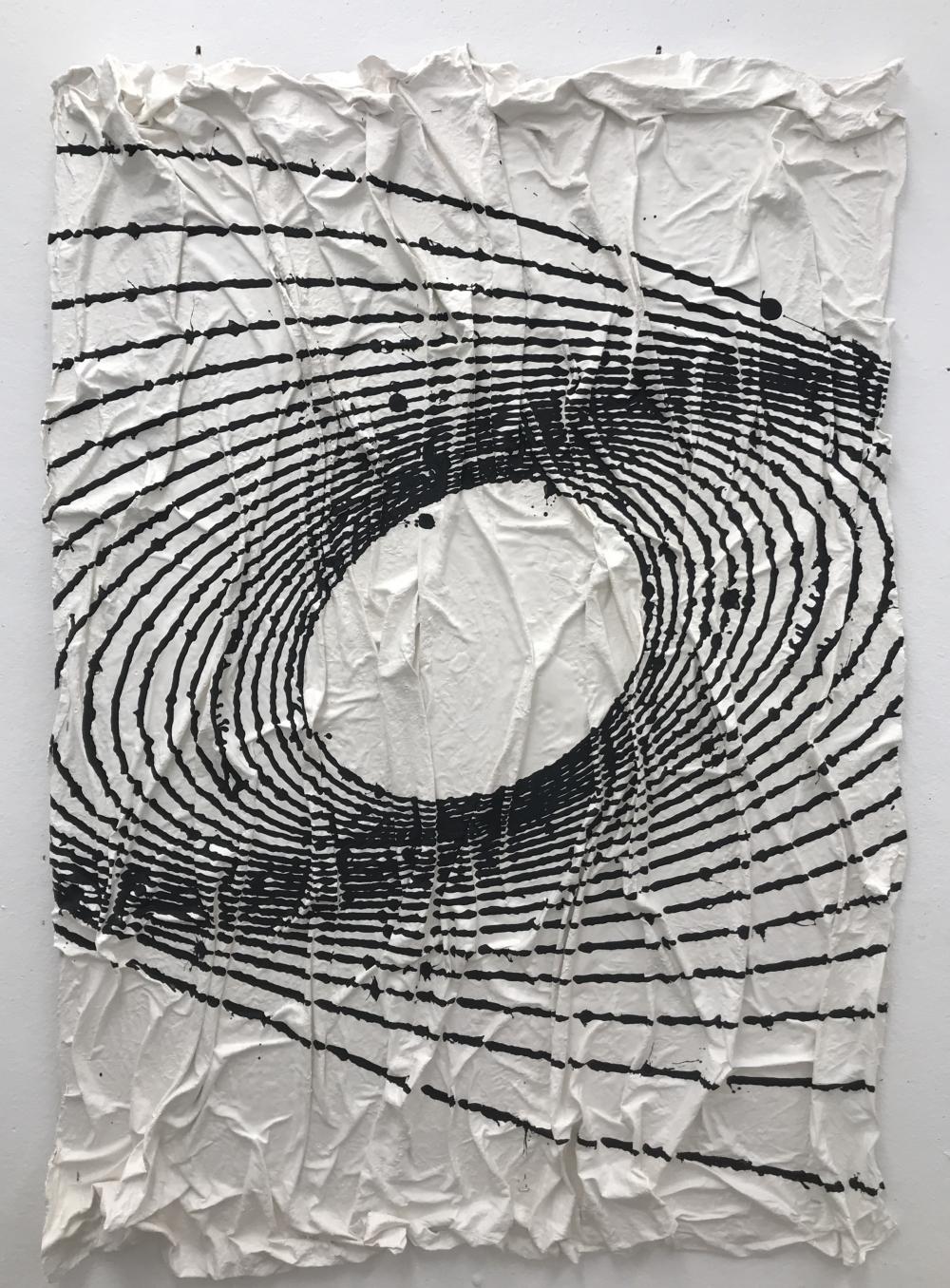 In my art I enjoy exploring different mediums, materials, and processes. Some of my work is an examination of life and death and the cycle that connects them. Some of my art is much more about the process of producing it and my personal satisfaction at making an idea come to fruition. I am still exploring my practice and the possibilities of what I can make and what ideas I can communicate through my work. My work often incorporates nature and organic shapes. I tend to work mostly in sculpture but I also enjoy incorporating painting and printmaking in my practice. I often shift between working in the macro and micro and playing with the scale of my pieces. For my recent project, Spiraling, I wanted to explore texture and pattern. I used fabric dipped in plaster to create a solid surface that visually mimicked something soft and fluid. I was interested in how I could then apply paint in a way that both highlights and ignores the texture of the canvas. While making these pieces, I discovered that the process reflected another interesting theme; presumed control and a subsequent lack of control. No matter how much I thought I could control the swing of the pendulum, it never quite swung the way I had pictured.
In my art I enjoy exploring different mediums, materials, and processes. Some of my work is an examination of life and death and the cycle that connects them. Some of my art is much more about the process of producing it and my personal satisfaction at making an idea come to fruition. I am still exploring my practice and the possibilities of what I can make and what ideas I can communicate through my work. My work often incorporates nature and organic shapes. I tend to work mostly in sculpture but I also enjoy incorporating painting and printmaking in my practice. I often shift between working in the macro and micro and playing with the scale of my pieces. For my recent project, Spiraling, I wanted to explore texture and pattern. I used fabric dipped in plaster to create a solid surface that visually mimicked something soft and fluid. I was interested in how I could then apply paint in a way that both highlights and ignores the texture of the canvas. While making these pieces, I discovered that the process reflected another interesting theme; presumed control and a subsequent lack of control. No matter how much I thought I could control the swing of the pendulum, it never quite swung the way I had pictured.
 I am a designer based in Bangkok, Thailand working ranging from logo designs, branding, poster designs, and illustration. I’m attending Mount Holyoke College, majoring in Studio Art with a concentration in Graphic Design. My inspiration in color through visual communication deeply informed my practice. This series of work explores color alongside its relation with surrounding colors and the effect that has on human perception. Because color and visual perception are subjective, not every person perceives color equally. Each of us has a subjective experience of color; the way we see color may be informed by our past experiences, memory, and culture, in addition to our neurological similarities and differences. The works I produce invite one to question their connection between colors, as well as everything they think they know. These are created by manipulating colors and objects that are thought to match with their corresponding or complementary shade. Objects are constantly shifting within colored grids to explore how colors function in experiences and how they provide viewers with those experiences.
I am a designer based in Bangkok, Thailand working ranging from logo designs, branding, poster designs, and illustration. I’m attending Mount Holyoke College, majoring in Studio Art with a concentration in Graphic Design. My inspiration in color through visual communication deeply informed my practice. This series of work explores color alongside its relation with surrounding colors and the effect that has on human perception. Because color and visual perception are subjective, not every person perceives color equally. Each of us has a subjective experience of color; the way we see color may be informed by our past experiences, memory, and culture, in addition to our neurological similarities and differences. The works I produce invite one to question their connection between colors, as well as everything they think they know. These are created by manipulating colors and objects that are thought to match with their corresponding or complementary shade. Objects are constantly shifting within colored grids to explore how colors function in experiences and how they provide viewers with those experiences.
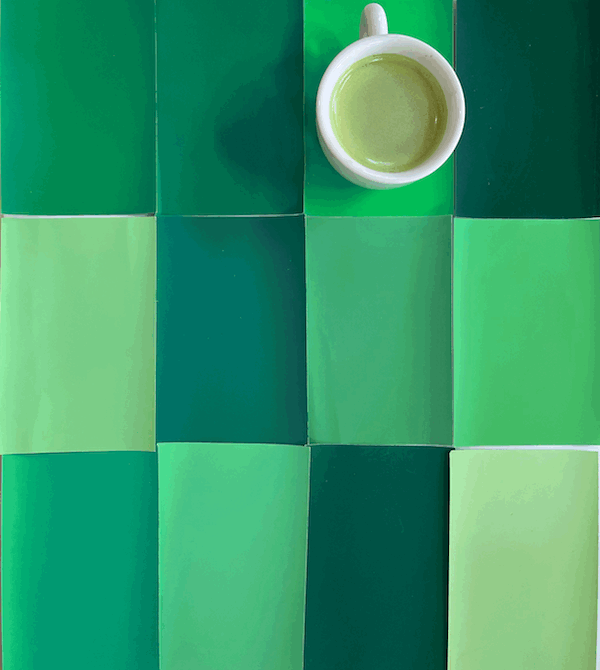

 Give
Give
